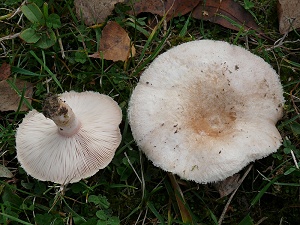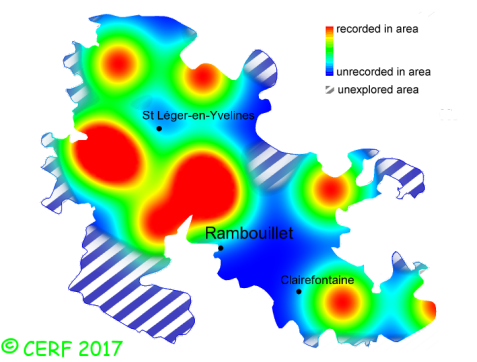| Lactarius pubescens Fr. |
|
|
|
|
|
|
The cap is white, pink-white to cream-ochre. The flesh is unchanging; its taste is hot; the odour is similar to pelargonium; its texture is grainy (breaking like a chalk stick). The gills are decurrent, crowded . The spore print is white. This species is mycorrhizal. It grows in lawns, gardens, pastures, along paths, with birch. The fruiting period takes place from August to November.
Chemical tests : none. Distinctive features : Very pale cap, slightly banded, hairy only at the margin; milk staining yellow on cloth; acrid taste; odour of pelargonium; with birch Lactarius pubescens is quite rare and scattered in the forest of Rambouillet, and is occasional, more generally speaking . | ||
|
page updated on 14/01/18

